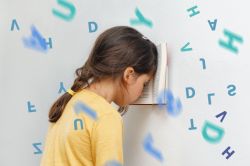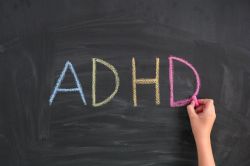The creative brain does not perceive reality linearly. It sees it in images, symbols, and connections. This form of neurodivergence is defined by expanded perception - the ability to notice subtleties that others overlook and to weave them into new, meaningful patterns. Just like HSP, ADHD, or autism, the creative brain exists on a delicate threshold between inspiration and overload, between openness and the need for calm.
A Brain That Thinks in Images
The creative brain works differently from a brain focused on structure and linearity. Its activity is shaped by an intensified default mode network, which generates free associations and supports the emergence of new ideas. Visual and parietal regions create mental imagery and spatial understanding, while the limbic system blends emotions with memory. The prefrontal cortex helps recombine these elements in ways that feel intuitive and unconventional.
For the creative mind, the world is a continuous stream of inspiration - colours, rhythms, movements, atmospheres. Its strength lies in noticing connections and producing fresh solutions. Its challenge lies in the sheer amount of sensory and emotional information it must process.
When Inspiration Turns Into Overload
During overload, creative energy becomes fragmented, fatigue replaces inspiration, and the nervous system becomes more sensitive to sound, light, and social stimuli. If the overwhelm continues, the brain may temporarily retreat into a mild shutdown - a necessary protective pause. This cycle is not a flaw but a natural rhythm. The creative nervous system requires as much space for recovery as it does for creation.
Sensory Synthesis and Expanded Perception
Many creative individuals experience subtle forms of synesthesia. Music can have colour; words can have texture; the atmosphere of a place can feel warm or cold; light may appear to carry movement or rhythm. This is not imagination but a reflection of how some brains integrate sensory input in broader, more intricate ways - creating a richer internal map of reality that fuels creative insight.
Why the Creative Brain Needs Silence
Silence, slow rhythm, and embodied presence are essential tools for the creative nervous system. They help the mind return to its centre, differentiate external stimuli from internal ones, and allow new ideas to settle instead of dissolving into chaos.
Multisensory Therapy: The Natural Language of the Creative Brain
- Light regulates overloaded neural circuits and supports visual imagination. Warm light calms; cool blue or violet tones stimulate visual networks. Photobiomodulation rhythms such as Alpha 10 Hz or Gamma 40 Hz help harmonise mental activity.
- Sound shapes internal rhythm. Low, stable frequencies soothe; 40 Hz rhythms activate creative pathways; binaural beats invite focus and clarity.
- Scent communicates directly with the limbic system. Citrus notes energise; frankincense and rose deepen intuition; rosemary and mint enhance mental clarity.
- Touch and movement bring creative energy back into the body. Gentle vibrations ground the system, mindful movement integrates ideas, and comforting pressure helps define internal boundaries.
And then there is silence - a therapeutic tool without which creativity cannot grow. In silence, associations settle, thoughts regain sharpness, and inspiration returns to its natural tempo.
Creativity as a Form of Neurodivergence
Creativity is not merely a skill. It is a way of being. The creative brain is more sensitive, more interconnected, and more intuitive. It perceives additional layers of reality - a gift that can feel overwhelming when unsupported.
But when it finds rhythm, spaciousness, and care, it becomes a mind capable of creating without burning out. A mind that can stand on its own. A mind that sees the world not only as it is, but as it could be.
Part of the Light Brains series: Neurodivergence and Multisensory Therapy
→ Introduction: Neurodivergence and Multisensory Therapy
→ ADHD and Attention in Motion
→ Autism and Sensory Sensitivity
→ Dyslexia and the Visual Brain
→ High Sensitivity as a Form of Neurodivergence
→ The Creative Brain and Expanded Perception
Recommended Reading
- Zabelina, D. L., & Robinson, M. D. (2010). Creativity as flexible cognitive control. Psychology of Aesthetics, Creativity, and the Arts. → A study on flexible attention and its role in the creative process.
- Beaty, R. E., Benedek, M., Kaufman, S. B., & Silvia, P. J. (2015). Default network activity drives creative cognition. Proceedings of the National Academy of Sciences. → Research demonstrating how DMN activity contributes to creative idea generation.
- Martindale, C. (1999). Biological bases of creativity. Handbook of Creativity. → A foundational overview of the biological mechanisms underlying creativity.
- Cytowic, R. E. (2002). Synesthesia: A Union of the Senses. → A comprehensive exploration of synesthesia as a unique mode of sensory integration.
- Dietrich, A. (2004). Neurocognitive mechanisms underlying the experience of flow. Consciousness and Cognition. → A neurobiological explanation of the flow state in creative work.
🌐 www.lightbrains.online





